Ready to see the market clearly?
Sign up now and make smarter trades today
Education
October 7, 2025
SHARE
Are You Trading What You Think You See? A Guide to Reviewing Trades With Market Replay
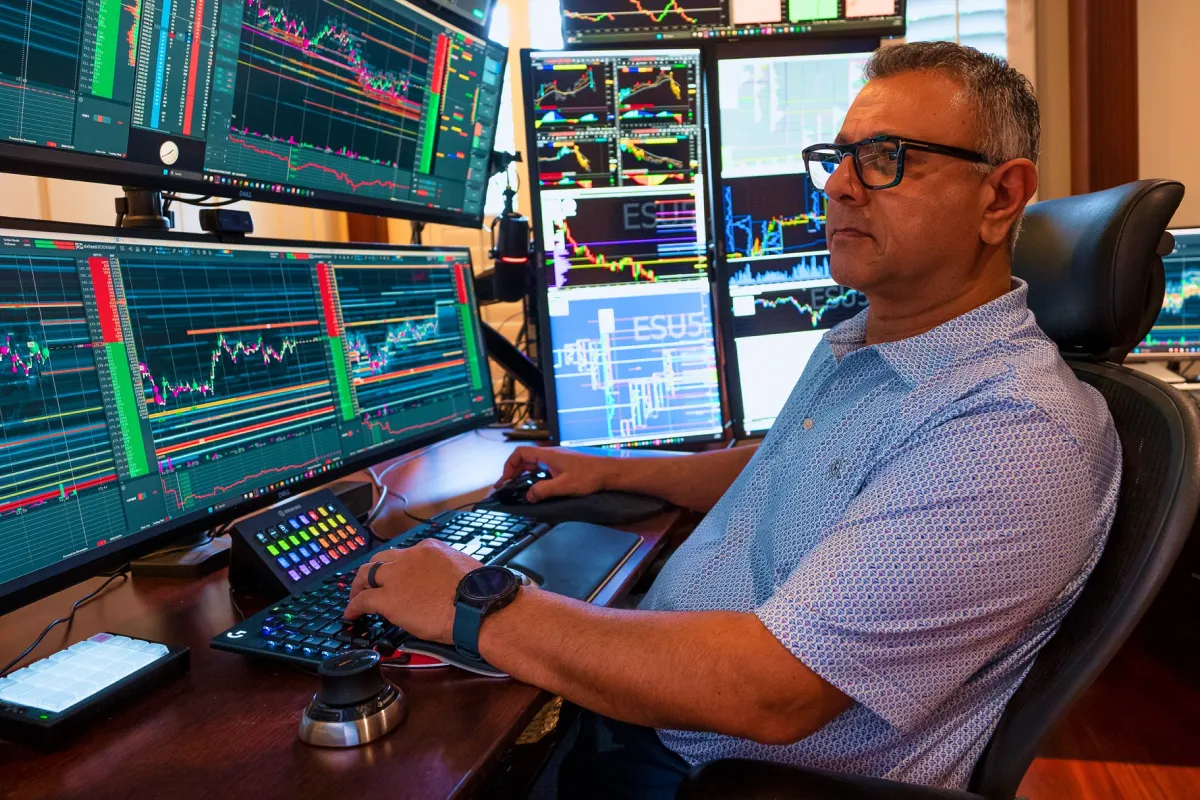 When you trade live, your brain can only process a fraction of what’s happening in real time! Yes, the markets move fast, and it is easy to miss key details, such as hidden orders, aggressive buyers or sellers, or fake-outs meant to trap you.
When you trade live, your brain can only process a fraction of what’s happening in real time! Yes, the markets move fast, and it is easy to miss key details, such as hidden orders, aggressive buyers or sellers, or fake-outs meant to trap you.
Due to this missing knowledge, a winning trade feels “obvious” to you, whereas a losing trade feels like “bad luck”. Most of the time, both impressions are wrong!
Now, understand that according to Norman Welz, trading is literally 100% psychology. And to improve this psychology, you can start doing “market replay trading”. In it, you replay and see exactly how order flow, liquidity, and trader behavior unfolded in real time.
Need a good tool? The Bookmap replay mode lets you spot mistakes and recognize patterns you might have missed live. In this article, you’ll learn how to run a trade review with order flow, how to build a trading journal strategy, and how Bookmap replay mode can let you create repeatable setups.
Why You Miss the Full Picture in Real Time
When you’re trading live, you never see the full picture! Why? That’s because your brain cannot process that much at once. In real time, emotions and pressure take over. Let’s see what usually happens:
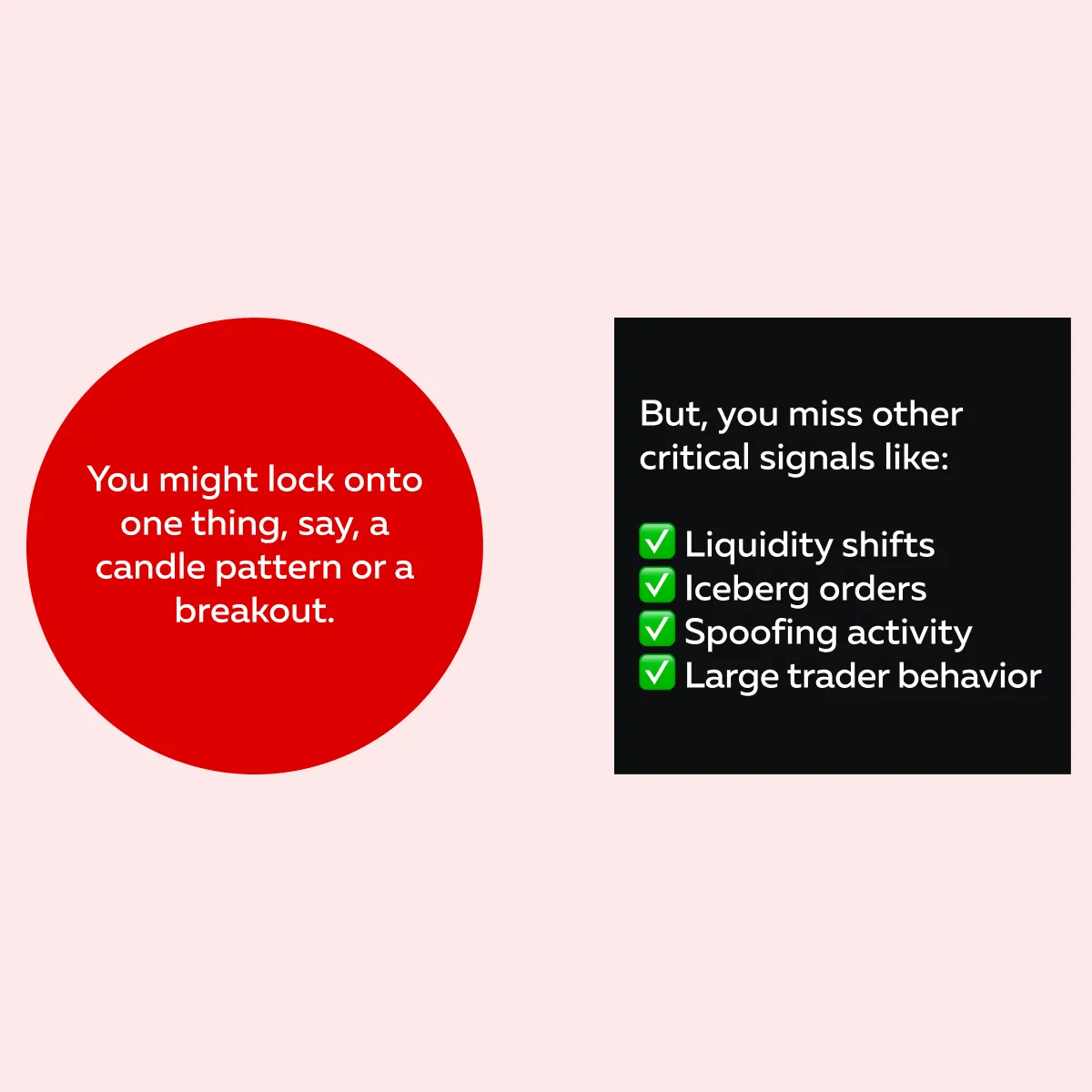
If you are using advanced real-time market analysis tools, like Bookmap, you even miss the heatmap changes. That’s because you’re too focused on price breaking a level.
The Real Problem
Markets move very quickly! While you’re trading live, your attention narrows to a few things (price, a candle, your P&L). So you miss other important pieces, such as:
- Hidden orders are being filled
- Big traders stepping in
- Liquidity is suddenly disappearing
Those details happen in seconds and aren’t obvious on regular charts. Now, that creates wrong impressions! Because you missed signals, the story you tell yourself after the trade is often wrong.
If the trade wins, your brain remembers it as “I was right.” If it loses, you call it “bad luck.” That’s “hindsight bias”, your memory manipulates the truth to make you feel better or justify choices.
For more clarity, let’s study an example:
- On Bookmap, you observed the price dropping below a key level.
- So, you decided to take a short trade because it looks like strong selling will push the market even lower.
- Later, when you replay the market in Bookmap replay mode, you see two things you missed:
- Buyers absorbing under VWAP: You missed seeing that big buyers were quietly buying the selling pressure, which stopped the price fall.
- A spoof wall above: A large-looking sell order was placed to scare sellers, but then canceled (pulled) before it truly held price down.
- In real time, those clues were easy to miss.
- But in replay you see exactly:
- Who hit the bids
- Where volume printed (volume dots)
- How the order book changed.
Thus, by using market replay trading and doing a trade review with order flow, you can slow things down.
The Key Takeaway
By making a trade review with order flow, you can cut through emotion. It allows you to study the real mechanics and build a better trading journal strategy based on facts, not feelings.
See what really happened on your last trade with Bookmap’s market replay.
What to Look For When Reviewing a Trade
When you do a trade review with order flow, it’s not just about whether the “trade made money” or “lost money”. A real review looks deeper! To make a detailed analysis, firstly, ask yourself these four things:
| I) Setup Validity | II) Timing | III) Follow-through | IV) Liquidity |
| Was the trade idea even part of your system? Or did you take it impulsively? | Did you jump in too early, chase it late, or enter right in the middle of a stop run? | Did bigger players support the move, or did momentum stall quickly? | Were your key levels backed by resting orders, or did liquidity disappear right when you needed it? |
Secondly, spot the missed context! Use Bookmap replay mode and catch these details you likely missed live:
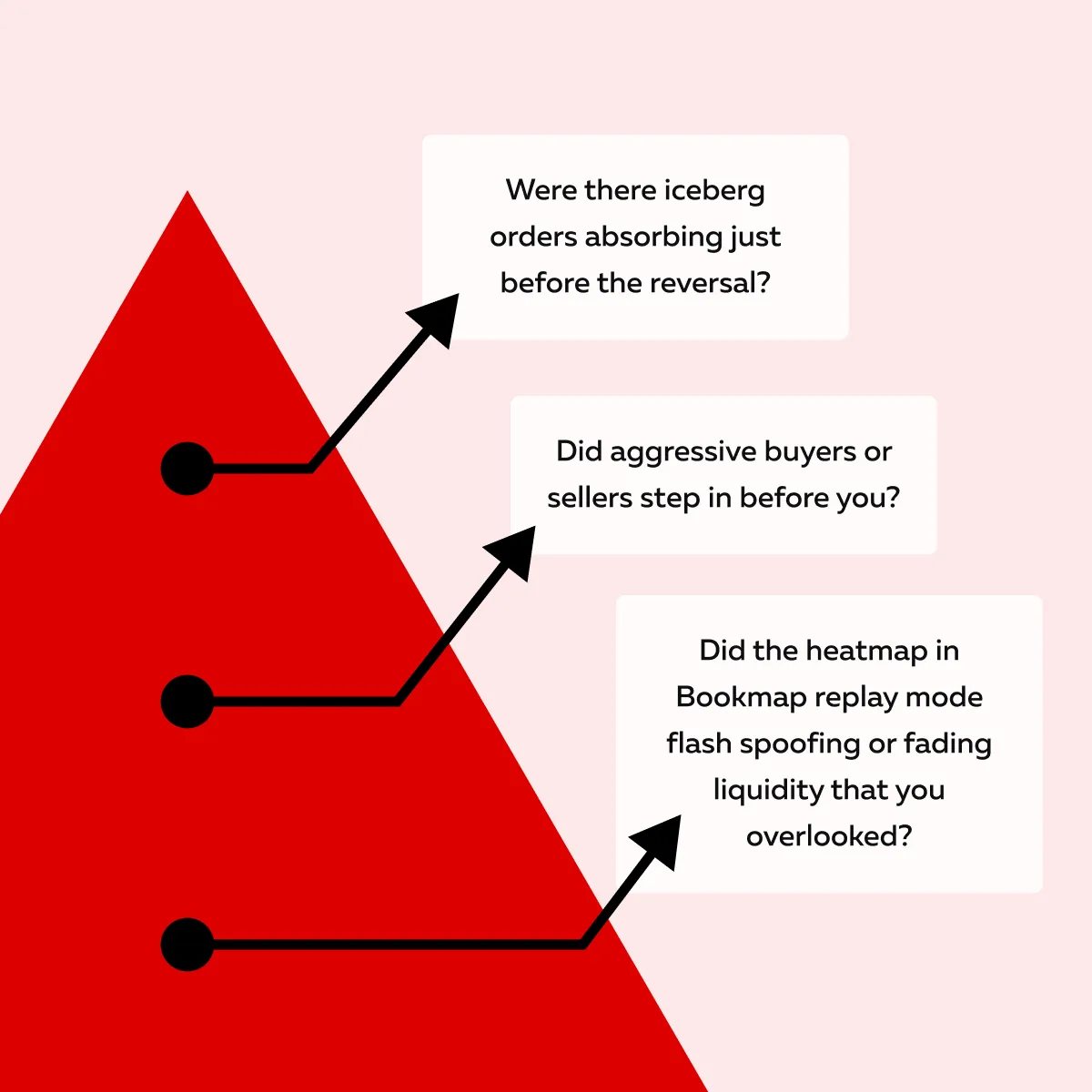
Thirdly, you should analyze the bigger market structure and trader behaviour. This can be done by finding answers to these questions:
- Did price respect or reject important zones?
- Was that level significant earlier in the session or week?
- How did the order book change before and after your entry?
Lastly, organize your trading journal strategy around these five pillars:
| I) Trade Setup | II) Entry | III) Execution | IV) Management | V) Context |
| Was the pattern, bias, or location valid? | Did you wait for confirmation or anticipate? | How was your fill? Any slippage or lack of liquidity? | Did you scale properly, move stops, or exit too soon? | Was it during news, lunch session, or thin liquidity hours? |
Always remember that your goal is not to just label trades as “good” or “bad.” Instead, you are trying to understand the “why” behind them. Once you are done with all the steps of a detailed trade review, the next move is to document and apply what you learned.
This can be done by:
- Adding notes, screenshots, and observations to your trading journal
and
- Tagging patterns like “false breakout” or “stop run.”
From the next time, review these notes before each session. This lets you avoid repeating mistakes and increases your chances of spotting high-quality setups in real time.
Why Replay Is Essential for Building Edge
Many traders think backtesting is enough to improve their trading setups! But backtests only show general outcomes. They tell you if a setup might work. But they do not know how the market actually behaved.
Thus, to build real trading skills, you need market replay trading. It lets you see the second-by-second changes in order flow. For example, Bookmap replay mode shows:
- How liquidity shifts
- How orders appear or disappear
- How price reacts
This type of review trains your eyes to recognize real market signals (something a basic backtest can’t do).
Replay Trains Your Visual Memory!

The more you study, the faster you’ll recognize repeating setups, such as:
- A breakout that’s about to fail
or
- A liquidity trap is forming
These details show up clearly in the Bookmap’s heatmap and volume dots. But they are not visible in standard candlestick charts! By making a trade review with order flow, you connect with what you thought happened in the market with what actually unfolded.
How to Gain The Most from the Bookmap Replay Mode?
When you use Bookmap replay mode, you often discover that the mistakes you thought were “bad luck” actually come from patterns in your own execution. Let’s see some common examples:
| Your Action (Trading Mistakes) | What You Spot Later on Bookmap Replay Mode |
| You entered the trade too early. |
|
| You see a large size on the order book and assume it shows a strong commitment. |
|
| You enter after a strong move has already taken off. |
|
In this way, with market replay trading, you can slow everything down and observe the following:
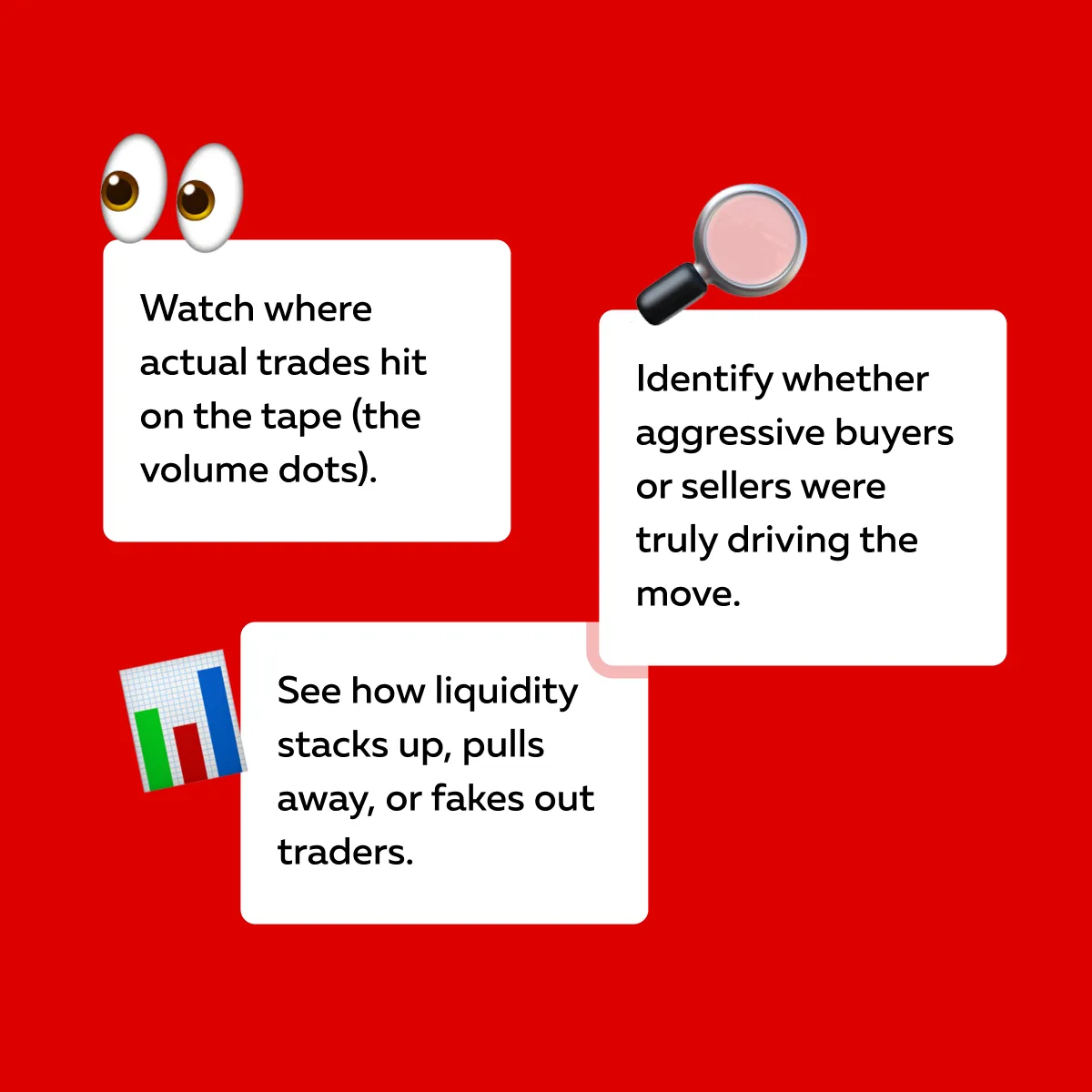
Furthermore, you can even rewind key moments to test “what if” scenarios. For example, you can analyze whether a later entry or a tighter stop would have improved the trade.
This type of trade review with order flow gives you insights you’d never see from candlesticks alone. As you keep practising, you usually refine your entries, exits, and overall decision-making. That too with hard evidence and not just memory or emotion. Great traders review their decisions. Use replay to identify patterns and refine your edge.
Turning Replays Into a Playbook
One replay isn’t enough! Watching a single replay is helpful, but true improvement comes from consistent market replay trading. As a trader, you can pick three trades each week to review:
- One win
- One loss
- One trade you almost took
Now, look at them from different angles: the 1-minute chart, the Bookmap heatmap, and the volume profile. Then ask yourself:
-
- What did I miss?
- What could I have done differently?
The answers to these questions give you immense knowledge and develop your trading edge. Additionally, you can also turn a journal into your own personal playbook.
Build Your Personal Playbook
A good trading journal strategy isn’t just a record of trades! It’s your playbook. Every time you do a trade review with order flow:
- Take screenshots
- Add notes
- Write down the decision criteria
As you keep doing this, you’ll start spotting these repeatable conditions:
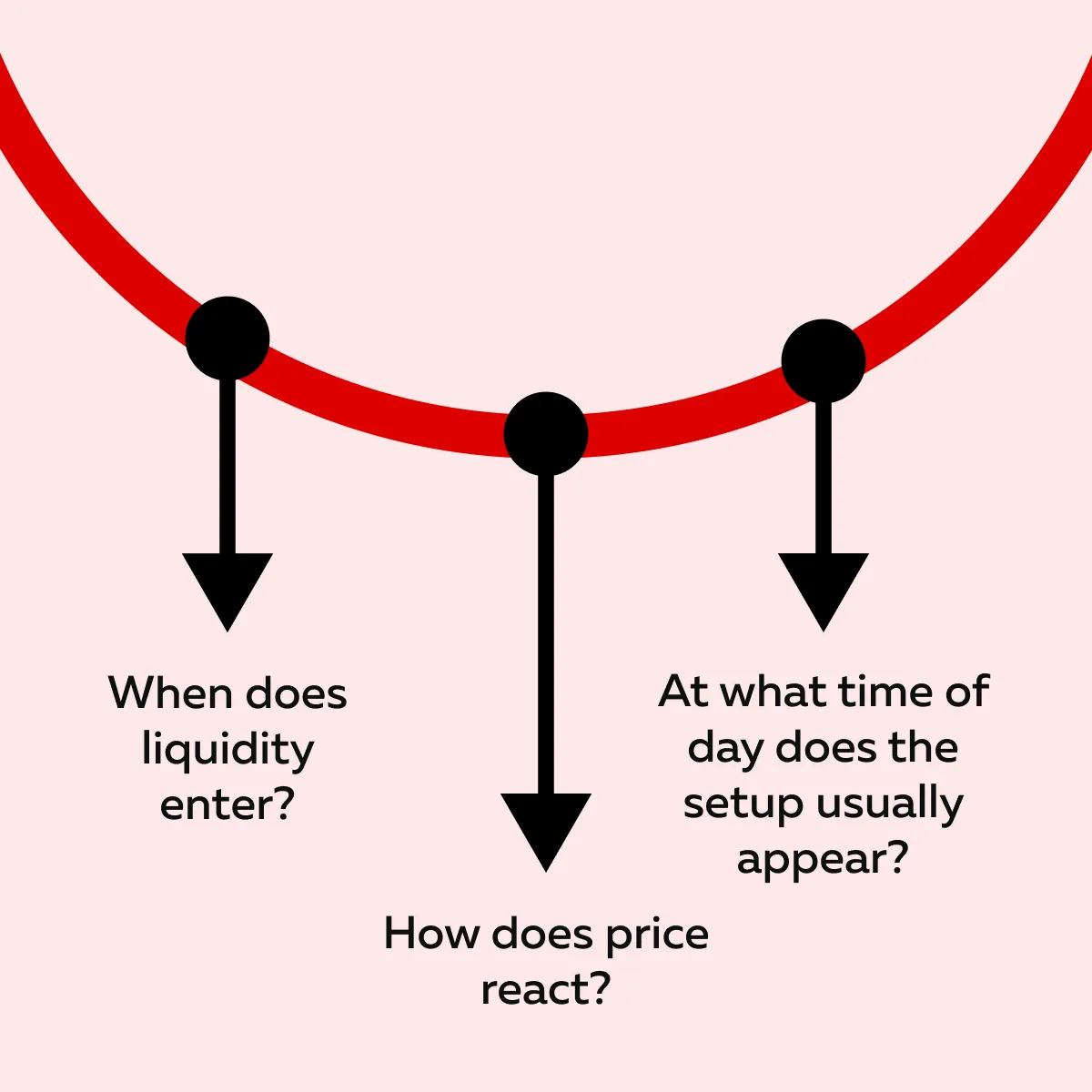
In a way, this becomes your personal checklist for an “ideal entry.”
Some Pro Tips for Mastery
Want to speed up your learning curve? You can add structure to your reviews as follows:
- To organize trades, you can use tags or folders like:
- False breakout
- Trapped sellers
- Stop run fade
- Collect clips of failed setups. This trains your brain to recognize what not to trade.
- Before each session, review a few past clips in Bookmap replay mode. This improves your focus and prepares you for live trading.
Conclusion
Traders fail because they don’t have knowledge. Well, this statement is only somewhat true! The reality is that most traders fail because they don’t fully see what’s happening in real time. When you are trading live, stress, emotions, and high speed make it difficult to notice everything happening in the market.
That’s where market replay trading comes in! By reviewing your trades afterward, you uncover the real reasons behind wins and losses, such as:
- Liquidity absorption
- Spoofing
- Chasing momentum too late
Without replay, you’re mostly guessing! So, how do you replay? You can start using Bookmap replay mode to slow the market down. Using it, you can observe how the order flow happened and connect price action with actual behavior. This process builds awareness as replay turns mistakes into lessons. Don’t guess why your trade failed—review the full context with Bookmap.
FAQs
1. How is market replay different from just reviewing a chart?
A regular price chart only shows candles or bars! It tells you where the price moved, but not why. Now, market replay trading adds the missing layers, which are:
- Order flow
- Liquidity shifts
- Volume dots
With Bookmap replay mode, you can watch the market unfold exactly as it happened. You can clearly spot when traders stepped in, pulled orders, or created fake walls. This knowledge lets you understand the true story behind each move!
2. How often should I review trades?
As a trader, you must realize that quality matters more than quantity! Ideally, you should start with two or three replays per week. While replaying, pay attention to trades that left you confused, whether those are wins, losses, or setups you didn’t take.
Study them carefully using the Bookmap’s heatmap and order flow. Remember that your goal is not to collect reviews. Instead, you must learn how to spot patterns and then adjust your trading strategy accordingly.
3. Can I review trades even if I didn’t take them?
Yes! Reviewing trades you didn’t take is one of the best ways to build awareness (without risking money). For example,
- You can study how the market reacted to the news
- You can learn how liquidity behaved around a breakout
By running a trade review with order flow, you train your eyes to recognize setups in advance. The benefit? The next time, you’re better prepared when the same conditions appear again.
4. What if I can’t tell what went wrong?
That’s normal and part of the learning curve! If you can’t identify what happened, save the replay and return to it later. Many traders also share clips with peers (in groups like Discord) to get feedback.
Gradually, as you learn more about liquidity, spoofing, and absorption, the same replay will make sense and reveal lessons you missed the first time.
5. Is replay useful for all assets?
Yes! Liquidity and order flow matter everywhere, whether you’re trading:
- Futures like ES
- Crypto like BTC
- Stocks like NVDA
Through Bookmap replay mode, you can see how different traders interact in your chosen market. By studying these patterns regularly, you’ll build “asset-specific” experience. This experience improves your ability to spot:
- Traps
- Breakouts
- Genuine momentum (across any instrument).